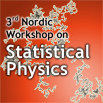Speaker
Prof.
Gaute Einevoll
(Norwegian University of Life Sciences)
Description
Until now most studies of biological neural networks have
focused on generic properties, for example, conditions for
obtaining various types of spike-train statistics in
homogeneous structureless networks (regular vs. irregular,
synchronous vs. asynchronous) or formation of coherent
structures such as stationary bumps or traveling waves and
pulses of neural activity. Now the ambition must be to go
beyond this and also model structured networks mimicking
particular biological systems, thus allowing for more direct
and comprehensive comparison with experiments. Sensory
cortical columns in mammals, comprising about 10000-100000
neurons, are prime candidates as model systems as (i) the
physiological properties of these cortical neurons and their
connections are fairly well mapped out, and (ii) their
direct involvement in sensory processing makes them
conceptually and technically easier to probe experimentally.
Here a multiscale modeling approach for the signal
processing properties of such cortical columns is presented
and discussed. The approach is multilevel in that the same
system is modeled at different levels of detail, just like a
gas of molecules both can be modeled at the microscopic
molecular level (using Newton’s laws) and at the macroscopic
level (using thermodynamics). To allow for model testing,
the set of interconnected models must be able to predict
what is measured with the various available experimental
techniques, and multimodal modeling, i.e., “modeling of what
you can measure”, is thus a key part of the approach.
As an example we focus on stimulus-evoked responses in the
rat barrel cortex, a part of cortex involved in the
processing of whisking stimuli. From extracellular
potentials recorded with a linear (“laminar”) electrode
array spanning the column of the barrel cortex [1],
physics-type “multimodal” modeling of the recorded
potentials [2,3] are used to extract population firing rates
of the salient cortical populations [1]. These are in turn
used to estimate population network models for the signal
processing done in the column [4]. Finally, preliminary
results from attempts to “reverse engineer”, i.e., represent
the same dynamics with spiking-neuron network models with
thousand of neurons instead of population firing rates, are
presented.
[1] GT Einevoll et al, J Neurophysiol 97:2174 (2007)
[2] KH Pettersen, GT Einevoll, Biophys J 94:784 (2008)
[3] KH Pettersen et al, J Comp Neurosci 24:291 (2008)
[4] P Blomquist et al, PLoS Comp Biol 5:e1000328 (2009)

